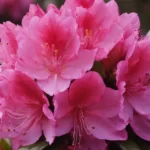Collards, a staple in Southern cuisine, are a beloved leafy green known for their hearty flavor and nutritional value. In Georgia, with its rich agricultural history, growing collards can be particularly rewarding. Understanding the best time to plant collards in this region is crucial for gardeners to enjoy a bountiful harvest. This guide will provide essential insights into planting and cultivating collards in Georgia’s unique climate.
Collards
Collards (Brassica oleracea) are a member of the cabbage family, closely related to kale and mustard greens. They are cherished for their large, dark green leaves and are a traditional feature in Southern cooking. Beyond their culinary popularity, collards are packed with vitamins and minerals, making them a nutritious addition to any diet. They are relatively easy to grow, making them a great choice for both experienced and novice gardeners in Georgia.
Climate and Soil Requirements for Collards in Georgia
Georgia’s climate, with its hot summers and mild winters, is well-suited for growing collards. These plants thrive in cooler temperatures and can even withstand light frosts, which often enhance their flavor. For optimal growth, collards prefer well-draining soil rich in organic matter. The soil pH should be slightly acidic to neutral (pH 6.0 to 7.0). Preparing garden beds with compost or well-rotted manure can help create the ideal growing conditions for collards in Georgia.
Best Time to Plant Collards in Georgia
In Georgia, the best time to plant collards is typically from late summer to early fall. This timing allows the plants to establish themselves during cooler temperatures, which is crucial for their development. Planting in late summer ensures that collards will mature during the fall, yielding a harvest through the winter months. In some parts of Georgia, particularly in the south, a second planting in late winter or early spring is also possible, taking advantage of the mild weather before the summer heat sets in. Gardeners should consider their local climate, as Georgia’s weather can vary significantly from the mountains to the coast.
Starting Collards Indoors vs. Direct Seeding Outdoors
Gardeners in Georgia have two main options for planting collards: starting seeds indoors or direct seeding outdoors.
- Starting Collards Indoors: This method involves planting seeds in containers or trays inside and then transplanting the young plants into the garden later. Starting indoors allows for a controlled environment, protecting the seedlings from extreme weather or pests. This method is ideal for getting a head start in late winter or early spring, as the seedlings can be moved outside once the weather stabilizes.
- Direct Seeding Outdoors: Planting seeds directly into the garden is the more traditional method. It’s best done in late summer or early fall. Direct seeding is simpler and less labor-intensive but requires careful attention to weather conditions. In Georgia’s variable climate, protecting the seeds from extreme heat or heavy rains might be necessary.
Care and Maintenance of Collards in Georgia
Once planted, collards require regular care and maintenance to thrive:
- Watering: Collards need consistent moisture, especially during dry spells. However, avoid overwatering, as this can lead to root rot.
- Weeding: Keep the area around the collards free of weeds, which can compete for nutrients and water.
- Pest Control: Collards can attract pests like aphids and cabbage worms. Regular inspection and natural or chemical controls may be necessary.
- Mulching: Applying mulch around the plants helps retain soil moisture and suppresses weeds.
- Fertilization: Collards benefit from occasional fertilization. A balanced, all-purpose fertilizer can be applied mid-season to support growth.
Common Challenges in Growing Collards in Georgia
Growing collards in Georgia can present some challenges:
- Pests and Diseases: Common pests include aphids, cabbage loopers, and slugs. Diseases like leaf spot and black rot can also occur. Monitoring and timely intervention are key to managing these issues.
- Climate Extremes: Georgia’s hot summers and occasional cold snaps can stress the plants. Providing shade during extreme heat and covering the plants during frosts can help mitigate these effects.
- Soil Problems: Poorly draining or nutrient-deficient soil can hinder growth. Regular soil testing and amendments can help maintain optimal growing conditions.
Addressing these challenges promptly can ensure a healthy and productive collard crop.
Harvesting and Storing Collards
Harvesting collards at the right time is crucial for the best flavor and nutritional value. In Georgia, collards are typically ready for harvest 60 to 80 days after planting. The leaves are harvested when they are firm, vibrant, and about the size of your hand. It’s best to harvest the lower leaves first, leaving the upper ones to continue growing. This selective harvesting method allows the plant to continue producing throughout the season.
Once harvested, collards can be stored in the refrigerator for up to a week. For longer storage, blanching and freezing the leaves is an effective method. This process preserves the flavor and nutritional content of the collards for several months.
Companion Planting with Collards
Companion planting can be beneficial for collards, especially in a diverse garden ecosystem. Planting collards near herbs like dill and rosemary can help deter pests. Other good companions include onions, garlic, and celery, which can enhance growth and flavor. However, avoid planting collards near other members of the cabbage family to prevent the spread of pests and diseases.
Concluding Thoughts
Planting collards in Georgia can be a rewarding experience for any gardener. By understanding the ideal planting times and providing the necessary care and maintenance, you can enjoy a plentiful harvest of this nutritious and versatile vegetable. Collards are not only a staple in Southern cuisine but also a valuable addition to any garden due to their hardiness and nutritional benefits. With the right approach, you can successfully grow and enjoy collards, whether you’re a seasoned gardener or a beginner.



